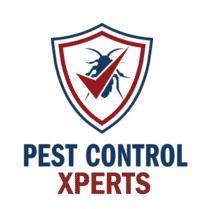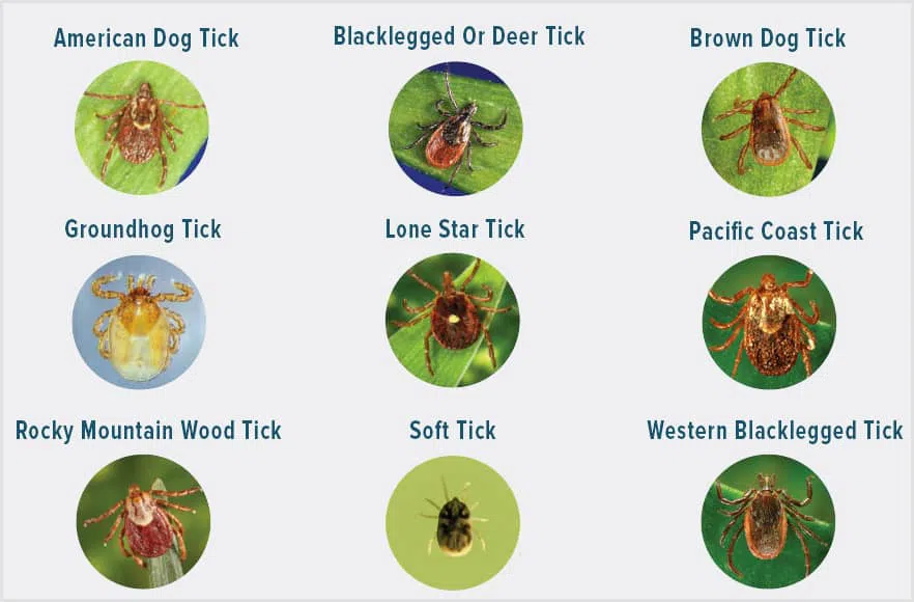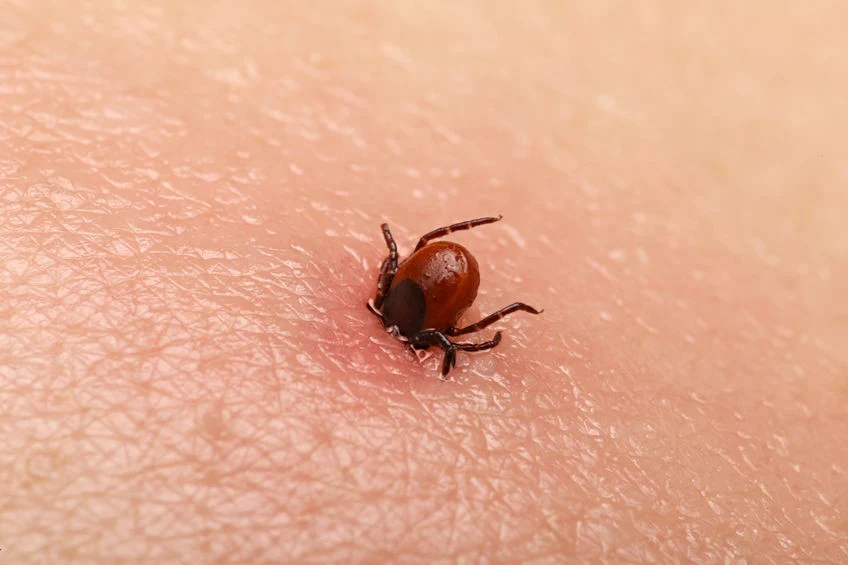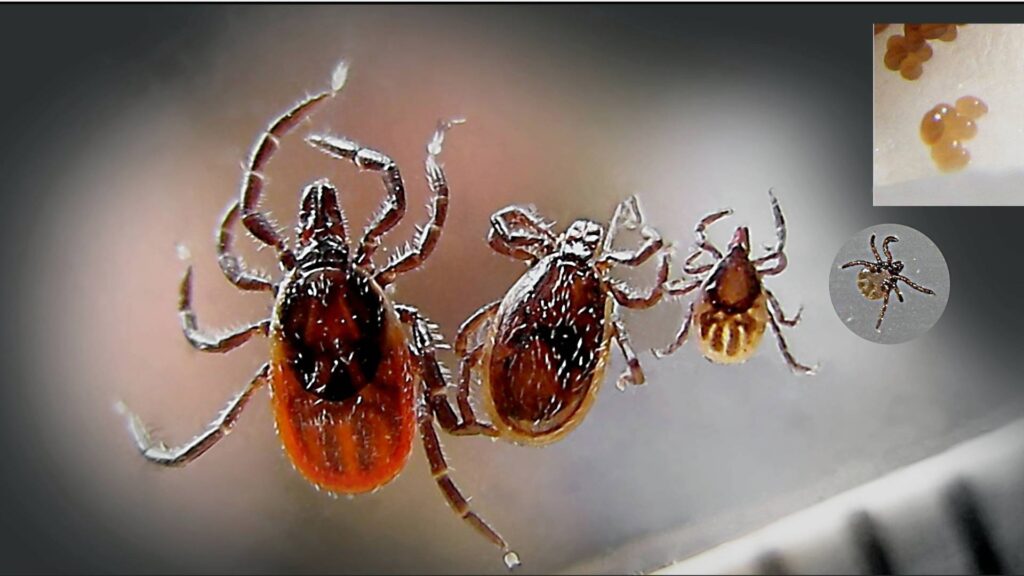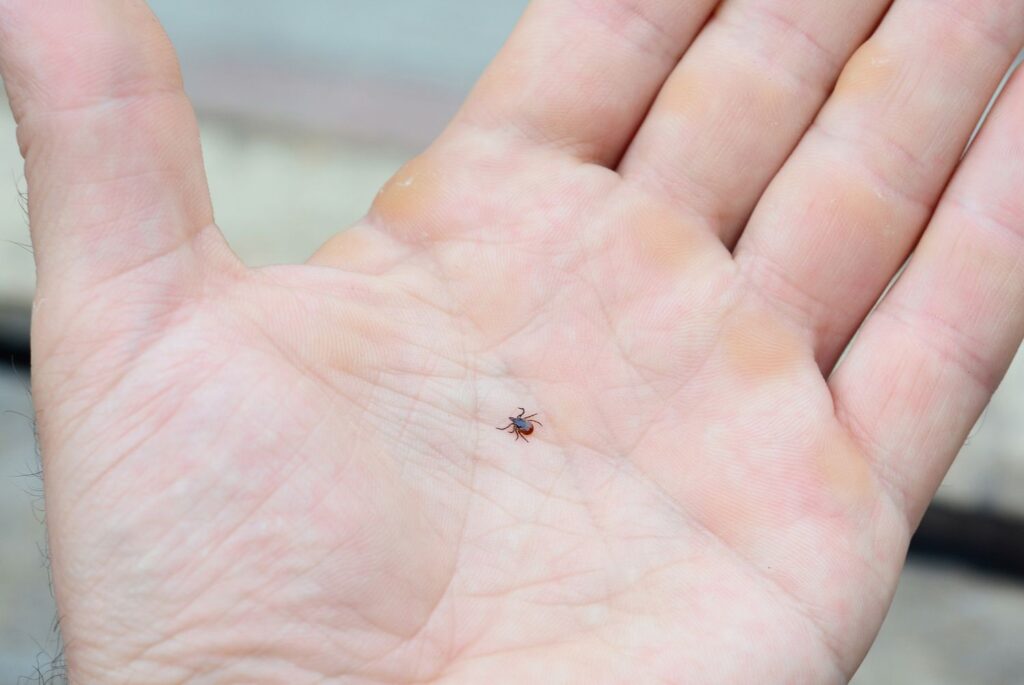Tick Removal Services in Binghamton
Serving residences and businesses throughout Binghamton, Vestal, Johnson City, Endicott, Endwell, Windsor, Whitney Point, Owego, and Apalachin.
Pest Control Xperts delivers complete tick removal throughout New York’s Southern Tier. One adult tick can hitchhike on a dog during a creek side walk or ride into a basement on camping gear, then drop dozens of eggs that hatch into thousands of hungry larvae within weeks. These parasites transmit illnesses such as Lyme disease, anaplasmosis, and ehrlichiosis, all of which occur in Broome County every year. Our local exterminator team combines careful inspection, science driven treatment, habitat modification, and straightforward prevention coaching so families, property managers, and pet care professionals in Binghamton and nearby communities can enjoy outdoor spaces without constant worry about biting ticks.
Valley Climate Encourages Tick Activity
Binghamton lies at the meeting point of the Susquehanna and Chenango rivers. River fog settles into lawns each evening and raises humidity, a condition that helps tick eggs avoid drying out. April brings snowmelt and steady rain which soaks leaf litter in Vestal backyards and Endwell parks. By mid May daytime highs often reach the lower eighties while nights hover near sixty, prime conditions for blacklegged tick nymphs that transmit Lyme disease.
Summer weather stays warm but seldom extreme, so ticks remain active all the way through August. Autumn arrives with crisp mornings that push deer and rodents into residential zones. As wildlife moves, lone star ticks and American dog ticks follow, dropping off under shady shrubs beside patio seating. Winters are long but seldom lock the ground in deep frost for more than a few days at a time. When sunny thaws raise soil temperature above forty degrees, adult ticks become mobile again beneath snow free edges along south facing walls. Heated basements and crawl spaces in older Johnson City homes keep air slightly warmer than outside soil which allows brown dog tick populations to remain viable indoors even when snow covers the yard.
Common Tick Species in Broome County
Tick species | Key traits | Usual hiding places | Health concerns |
Blacklegged tick | Small dark body, elongated oval shape | Leaf litter, shady garden edges, low lying shrubs | Primary carrier of Lyme disease and anaplasmosis |
American dog tick | Dark brown with gray mottling | Tall grass near roadsides, unmown field margins | Vector for Rocky Mountain spotted fever |
Lone star tick | Brown with a white spot on female back | Brushy creek lines, wooded pasture borders | Known for creating red meat allergy and ehrlichiosis risk |
Brown dog tick | Reddish brown body, survives indoors | Kennels, carpeting, crate pads, attic insulation | Year round breeding, heavy infestations in pet spaces |
Proper identification allows Pest Control Xperts to select the most effective product blend and schedule follow up visits at the correct interval.
Signs of a Tick Infestation
- Pets scratch frequently or show small dark specks around ears and belly
- Family members notice itchy red bumps after working in the garden
- Tiny seed ticks crawl up white socks after walking across the lawn
- Shed tick skins appear on dog bedding, crate pads, or carpet edges
- Wildlife scat and tracks become common near patio perimeters
Any single clue merits a professional inspection because ticks multiply quickly when humidity is steady.
Five Step Tick Removal Program
Inspection
A trained exterminator meets the client to discuss pet routines, lawn care, wildlife sightings, and previous pest activity. Using a white cloth drag, the technician sweeps shaded turf and garden beds to collect live ticks for species confirmation. Flashlights and crevice probes uncover larvae hiding at baseboard edges, under porch steps, and behind utility boxes.
Interior treatment
- High suction vacuuming removes adults and eggs from carpets, upholstery, and floor cracks.
- A growth regulating product is applied along wall floor junctions to prevent larvae from maturing for up to five months.
- A slow release contact treatment coats pet resting areas and cracks around door mouldings, killing newly emerged adults while remaining gentle on fabric and hardwood.
- Targeted steam reaches deep into sofa seams, leather chairs, and drapes where liquids might stain.
Exterior treatment
- A transparent residual liquid encircles the foundation and stretches three feet into turf, focusing on shaded soil where pets nap.
- Granular control product spreads under ornamental shrubs, swing sets, and deck stairs, protecting high traffic play zones.
- Botanical dust is blown into crawl spaces, dog house floors, and between deck joists where moisture persists.
- Habitat recommendations cover trimming vegetation, storing bird seed in sealed bins, and securing trash lids to reduce wildlife visitation.
Client preparation
Owners boost results by hot washing pet bedding and throw blankets, vacuuming vehicle seats where animals ride, mowing lawn grass below three inches, and starting veterinarian approved tick prevention on every dog and cat the same day service begins.
Follow up
Eggs buried deep in mulch may hatch several weeks later. Pest Control Xperts returns within twenty one days to repeat drag tests and inspect interior sticky monitors. Any lingering activity receives precision retreatment at no extra cost during the service window. Properties near wooded acreage in Windsor or pet heavy campuses in Vestal often choose quarterly maintenance for ongoing peace of mind.
Seasonal Tick Timeline in Southern New York
- March and April soil warms above forty five degrees. Blacklegged adult ticks emerge first, seeking deer and early gardening residents.
- May through July warm nights accelerate egg hatch and nymph activity peaks. These nymphs are responsible for most Lyme disease cases.
- August and September drought stress weeds, pushing wildlife toward residential water sources. Lone star and dog ticks congregate along fence lines and shaded patios.
- October brings cooler mornings. Adult blacklegged ticks search for large hosts before winter, increasing risk to hunters and family dogs.
- November through February blacklegged ticks seek shelter under insulating snowpack or leaf litter. Brown dog ticks remain active wherever indoor temperatures stay above sixty.
Knowing when each surge occurs allows our office to schedule preventive exterior treatments before peak months.
Community Context
The Binghamton service area blends historic brick neighborhoods, suburban developments among rolling hills, university dormitories near city limits, light industrial warehouses, and rural farmsteads. Shaded lawns beside mature maples, creekside walking paths, and pasture borders create ideal habitat for ticks seeking humid microclimates. Pest Control Xperts tailors product choice and application method for each landscape type, considering soil composition, irrigation habits, and wildlife activity while always observing state and county environmental guidelines.
Why Choose Pest Control Xperts
- In depth knowledge of river valley moisture patterns and how they affect tick emergence
- Integrated approach that combines mechanical removal, growth regulation, residual barriers, botanical dust, habitat advice, and client education
- Photo rich digital reports with drag test counts, product labels, and service maps stored in a secure portal for property managers or health inspectors
- Flexible scheduling with sunrise, evening, and weekend appointments to respect work and school commitments
- Value driven maintenance plans that prevent surprise outbreaks and protect pet health year after year
Everyday Prevention Tips
- Comb pets with a fine tooth flea and tick comb after every outside adventure and drop any insects into soapy water.
- Keep lawn grass trimmed below three inches and rake leaf litter so sunlight reaches soil and lowers humidity.
- Create a two foot gravel strip between fence lines and play areas to reduce shaded ground cover.
- Store bird seed and pet food in metal bins with tight lids and sweep spilled feed promptly.
- Fix outdoor faucet drips and air conditioning drain lines to remove perpetual damp spots near foundations.
- Replace bright exterior bulbs with warm LED options to attract fewer insects and the spiders that feed ticks.
- Shake camping gear before bringing it indoors after visits to state parks or lake cabins.
- Inspect second hand rugs, couches, and floor pillows under bright light before purchase.
- Keep pets on continuous tick prevention medication recommended by a veterinarian.
- Schedule an annual Binghamton pest control inspection each spring before nymph activity peaks.
Frequently Asked Questions
How soon will bites stop
Clients usually notice fewer ticks within forty eight hours after service. Complete eradication follows the scheduled follow up visit when any remaining pupae or hidden larvae have emerged and contacted treated surfaces.
Are treatments safe for children and pets
All interior products dry in approximately two hours and stay in cracks or fabrics rather than open walking areas. Exterior applications focus on shaded ground, not flowering plants. Families simply keep children and pets away from treated zones until surfaces are dry.
Do residents need to leave during service
No. Occupants may remain onsite. The technician will request access to specific rooms only long enough to treat floor edges and pet areas.
Contact Pest Control Xperts Today
Persistent scratching pets, small dark specks on bed linens, or multiple bites after yard work signal active tick presence. Delaying treatment allows another hatch cycle and increases disease risk. Pest Control Xperts stands ready with prompt expert tick removal in Binghamton, Vestal, Johnson City, Endicott, Endwell, and Windsor. Our exterminator team inspects thoroughly, treats precisely, and shares easy prevention steps suited to Southern Tier living. Contact us Today for a comprehensive evaluation or to enroll in a maintenance plan that keeps your property comfortable and tick free every season.
